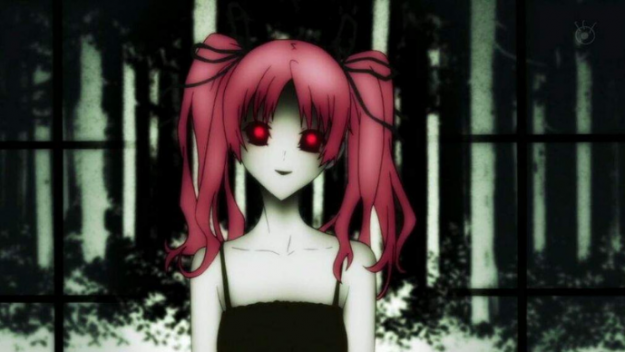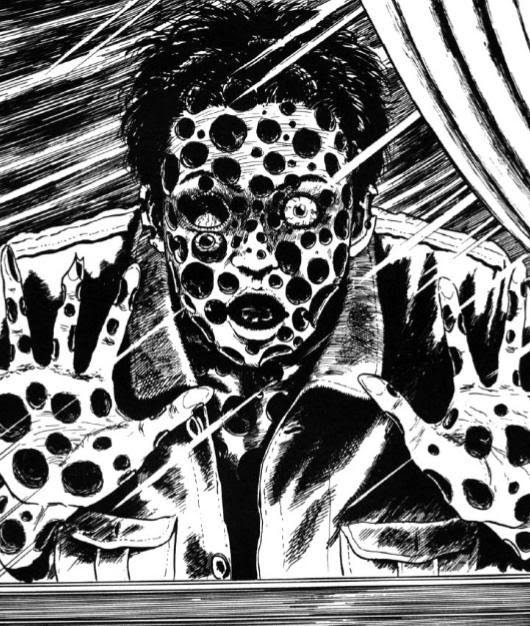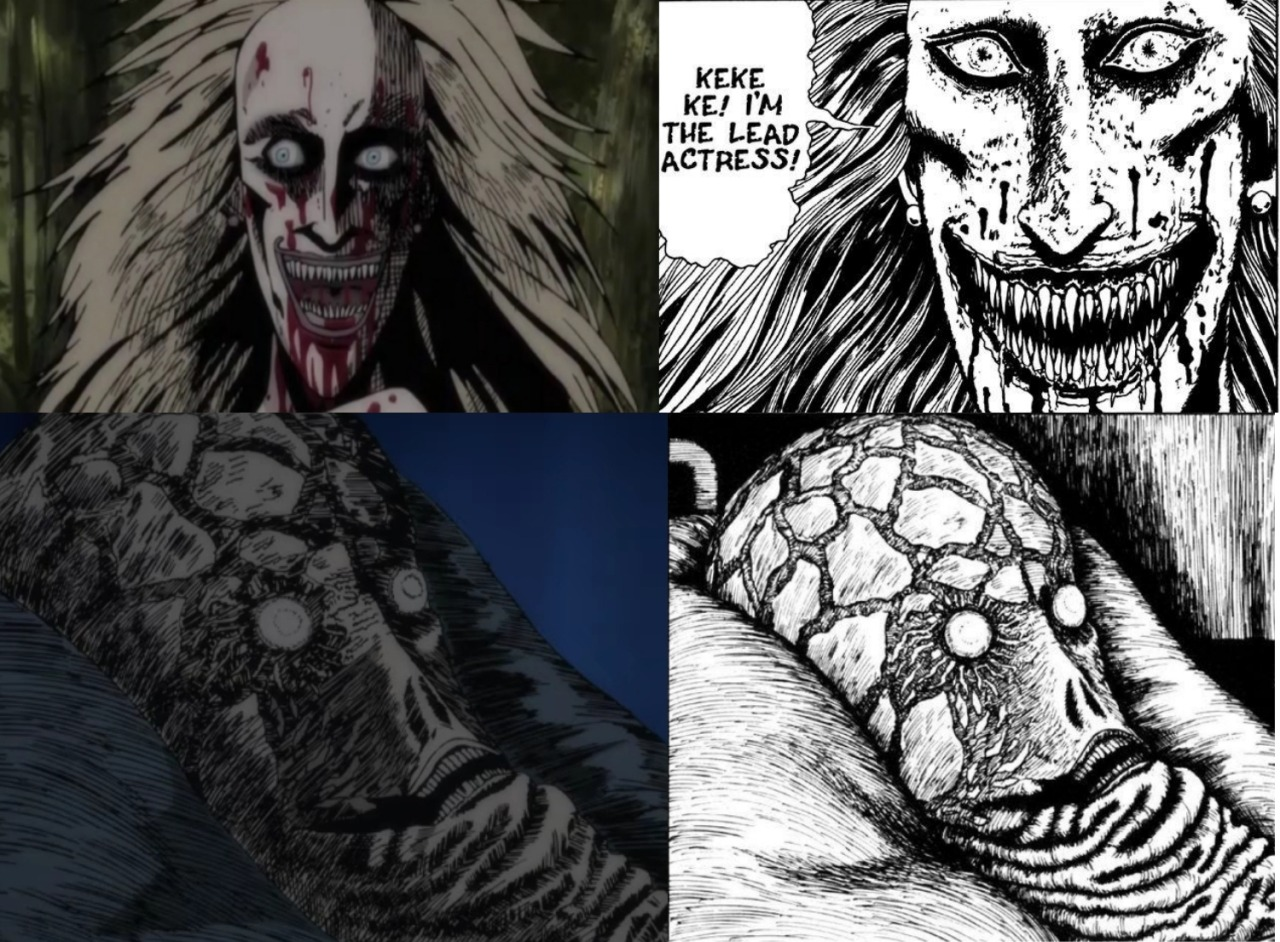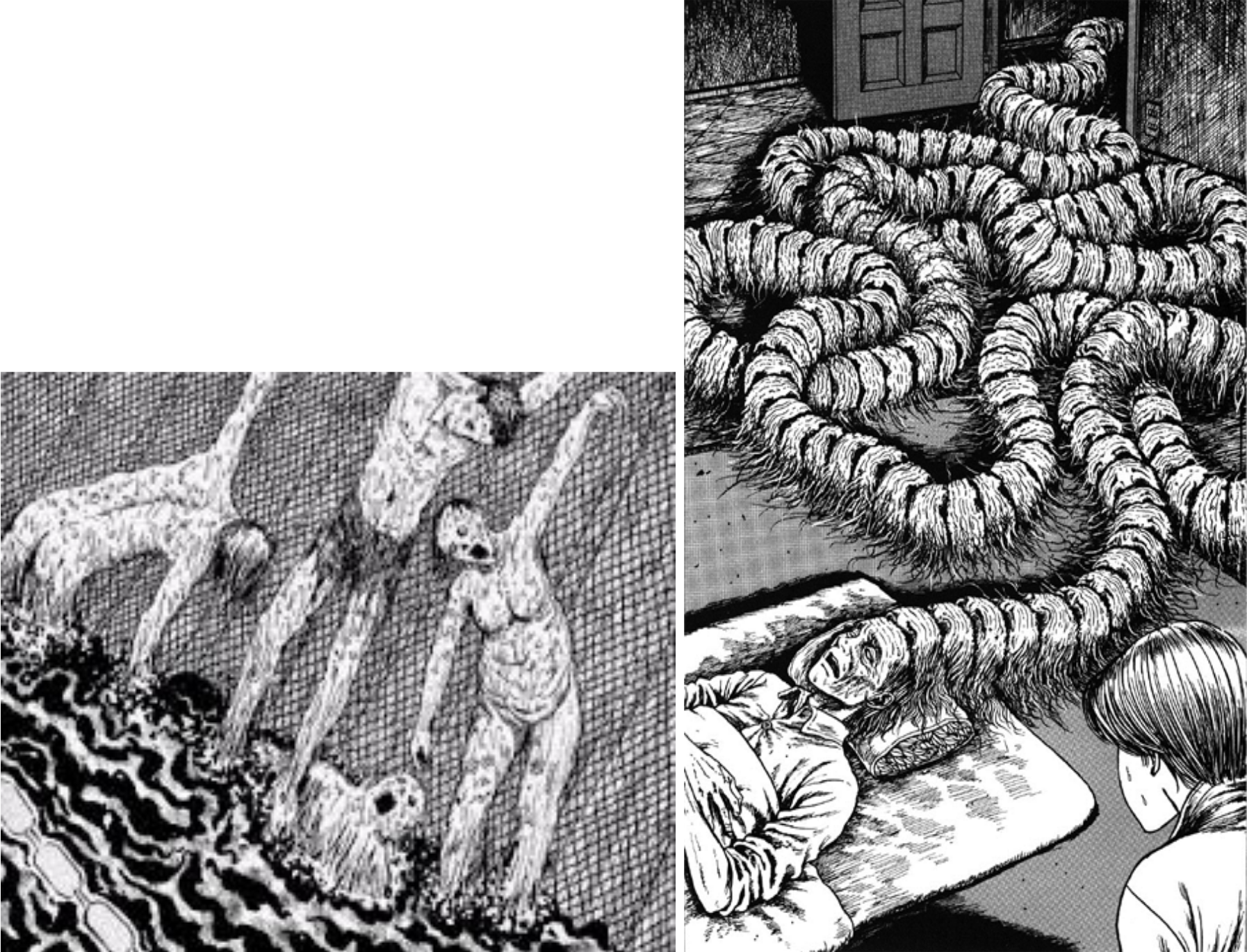

Body of IITR

Being a melting pot of all things bizarre, from 60 feet tall robot-alien hybrids to scantily clad people with sinful bodily proportions duking it out in interplanetary cat-fights, horror is admittedly not the first genre that comes to mind when one thinks of anime. Which is unfortunate to say the least, as in some ways, the medium is perfect for it.
Though well executed horror flicks are rare in anime and manga, there is the occasional gem that’s capable of instilling in one, a brand of fear exclusive to Japanese animation. Anime is quite different from live-action productions, if it wasn’t obvious. And so it tends to achieve the same effects in really different ways. For example, scenes involving dynamic motion often feature exaggerated deformations and variable frame rates to make up for the absence of motion blur and natural-looking camera shakes in animation. Nowhere are these differences as prevalent as they are in the horror genre, and are highlighted quite beautifully in the elegantly crafted works of the great Junji Ito.
Junji Ito has a very unique take on psychological horror, which at times feels like a twisted version of the lovecraftian brand of terror, albeit a tad bit closer to believability. The idea of “grounded” cosmic horror doesn’t make much sense… until it does. And the hint of reality makes it all the more unsettling.
Horror in Japanese art and animation is very different from western media.
“Jump-scares are cheap”, say the intellectuals on reddit. The thing is, jump-scares don’t get nearly enough credit for what they can, and do achieve, if done right. A full-length feature film can never be scary or terrifying for the entire duration. The plot, setting and progression are supposed to build tension, pull the viewer in, and brace them for the scare, but in the end, it’s the moments that reel it in.
This seemingly simple mechanic however, does not translate well into animation, much less into manga, as there is no “surprise moment” when you’re flipping through the pages of a book.
Or is there?
Junji Ito (a recurring theme throughout this article) overcomes this hurdle by making using of something the majority of us are inherently ignorant of.
Junji Ito’s work is above all else, unsettling. He too, relies on the gradual rise of tension. It’s not meant to be terrifying, it’s meant to put the reader off with slow psychological buildup, eating away at their fortitude, until you turn the page, and are met with One. Singular. Frame.

This frame hits hard for two reasons apart from the content of the frame itself : its carefully planned value to the plot, and the buildup leading up to it. By making use of something as insignificant as the flip of a page, something that all of us nonchalantly overlook, Ito-san is able to introduce the element of surprise to a medium that essentially lacks the groundwork for it.
And while it isn’t quite as nerve-wracking as a Xenomorph highlight reel from Alien, what it lacks in sheer shock value, it makes up for in meaning. Ito’s “jump-scares” often serve as grim revelations, central to the plot, quickly following up the release of fear with more mystique, to continue holding the reader in his/her agitated state.
The majority of anime with the horror keyword in their taglists, tend to resort to gruesome imagery in an attempt to jar the viewer. The problem being… it doesn’t work.
Roots of this practice can be traced back to Japanese culture - body horror and grotesque depictions having been prevalent in traditional Japanese art and literature for centuries now. But that is, in a word, irrelevant. It just doesn’t translate well into anime, because anime is… well, animated.
Animation, by its very nature, necessitates stylization and reduction in complexity, which is what drives body horror in the first place. It’s a major reason why the anime adaptations for Junji Ito’s works, weren’t received nearly as well as the original manga. The immaculately crafted illustrations lose much of their weight when animated, as a large portion of the depth and detail is lost in the transition, taking away the organic believability that made it work.

Body horror and monster design derive from features that humans have evolved to avoid. The twisted features, sharp teeth, unnatural movements are all intended to exploit a very primal sense of fear in the viewer. The stylistic representations of these elements don’t appeal to that primordial sense of fear the same way as their organic counterparts.
Hence, anime has to rely on more subtle ways to get across that “something’s wrong” feeling, the most prominent way being:
The concept of the uncanny valley has long been used by the film industry to build tension. It’s the eerie feeling you experience when something’s right… but it’s not. It’s just a little bit off, just enough to creep you out, but not enough for you to identify the reason.
Imagine a snake with human teeth, and you’re getting there.
Ito-san is renowned for his unique art style and use of unsettling imagery to jar the user. Not causing them to defecate, but keeping them damn near the edge the entire time.

Then there’s Perfect Blue, a 1998 thriller written by Sadayuki Murai and brought to life by Satoshi Kon.
The characters, the settings, the ambience… they all feel normal but they don’t, like they’re all hiding something you’ll never get to know. It’s exactly that. Just a little bit off. It all makes for a very off-putting atmosphere that plays perfectly into the intense moments. At times, the transitions between different moods feel a little abrupt, but that arguably makes it even better.
Another important element of Junji’s style is his intentionally vague plots:
For there is no fear greater than that of the unknown. The fear of uncertainty, the unknown, is perhaps the most nerve-racking. From a filmmaker’s perspective, it can also be quite hard to pull off. Give out too little information and the reader won’t relate to the story. Too much and it falls flat, as your “monster” loses its enigma. Many of Ito’s works don’t feature a physical monster; rather, it’s an unexplained phenomena that the concerned individuals, and for that matter even the readers, know absolutely nothing about, and have no way of understanding - prominent examples being “Uzumaki” and “The Enigma of the Amigara Fault”. By giving you a “monster” you don’t know, Ito-san pushes part of the fear-building on to your imagination, and your brain is forced to fill in the holes, speculating a version of the unexplained entity tailored to your deepest, darkest fears. No longer are you afraid of the monster you know it is, but of the devil you fear it could be. You’re given just enough to keep you on your toes, and your own anticipation eats away at you.
All in all, horror continues to be one of the most slept-on sub-categories of anime, thanks to the popular gore-fests that seemed to have undermined the entire genre, despite there being numerous gems to prove that horror is more than just pre-teens running around in a sea of guts and body parts flailing around like confetti. It’s one of the most skillful and refined art forms, that has led to some of the most intricate implementations of the simple buildup-fallout structure, as well as some of the most mind-bending psychological pieces to ever come out of the medium.
We recommend having a look at the following works if you feel like getting familiarized with this beautiful and surprisingly niche genre:
Slug Girl: One of the few examples of good body horror in anime/manga
Shiki: Great use of tone and atmosphere
The Hanging Balloons: Great example of Ito’s take at cosmic-ish horror along with Uzumaki
Perfect Blue: Another example of gorgeously unsettling atmosphere mixed in with bits of psychological goodness
Hell Girl: Noone completely gets it, but it’s beautiful
Aku no Hana: Not really horror per se, it’s only here because we want to get it out there. If there ever was an anime that deserved the psychological tag, it’s this one. Also has one of the most haunting ending tracks of all time